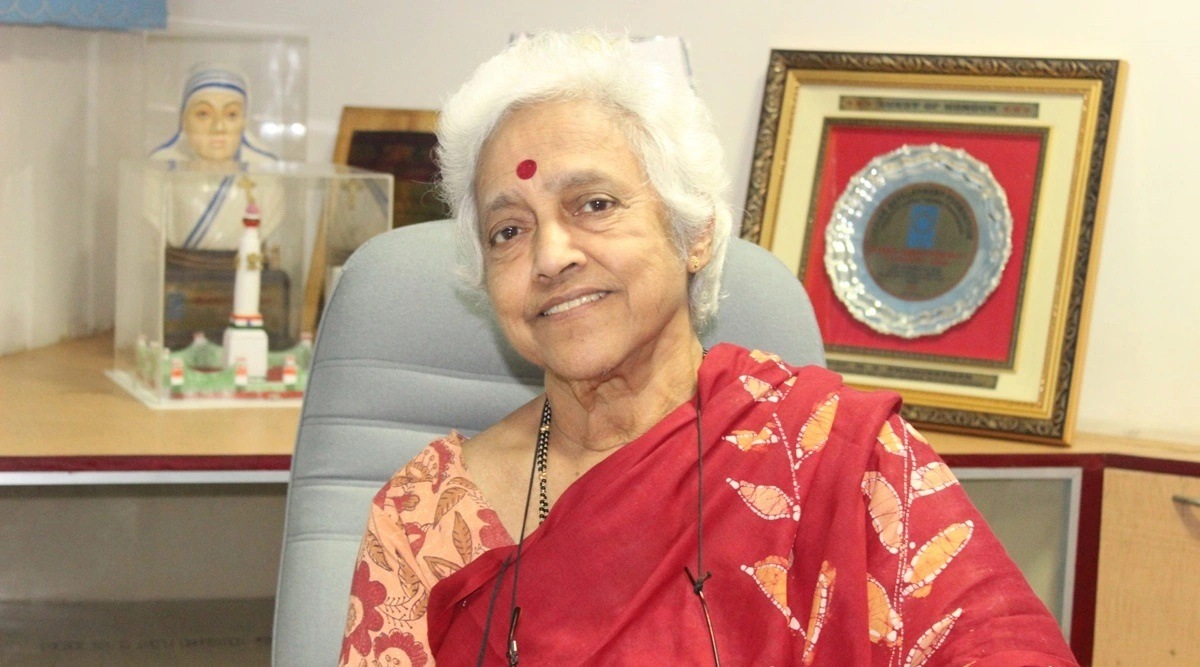 Mina Swaminathan (Source: www.mssrf.org)
Mina Swaminathan (Source: www.mssrf.org) The passing of Mina Swaminathan comes as a loss to generations of researchers, practitioners and activists who drew inspiration from her work. Most of all, it is a loss to India’s anganwadi sector. She was a pioneering educator, researcher and activist for women’s equality. She was a tireless friend of India’s children, especially those without privilege.
In the decades after independence, a generation of women leaders, Mina Swaminathan among them, set up some remarkable organisations. These would lay the foundations for important welfare programmes in the young nation. Mina was deeply involved in trailblazing initiatives such as the Centre for Women’s Development Studies CSDS) and mobile creches. Her greatest contribution was to lead the group whose report would become the basis of the Integrated Child Development Services (ICDS) in India.
Born in 1933, Mina was the daughter of Tamil writer “Krithika” Mathuram Bhoothalingam, and civil servant and economist S Bhoothalingam.
In Cambridge, Mina met her future husband, agricultural scientist MS Swaminathan. Both were committed to nation-building in independent India. After the devastation caused by the Bengal famine, Swaminathan chose to study agriculture. He would become an institution builder, leader of the Green Revolution in India, and first awardee of the World Food Prize.
Mina’s contributions were equally far-reaching. In 1970, she was asked to chair a study group on early childhood development. The group included Chitra Naik, J P Naik and Anil Bordia. Their report, submitted in 1972, was a powerful call to action: “With every year, the gap between the privileged and the others widens… Social justice demands attention to the preschool child because the first five years are crucial for all forms of development.” The report became the basis of ICDS, the largest programme of its kind in the world.
Mina believed that children and mothers deserved better support. She wrote: “When a woman says, ‘I quit working because I needed to take care of my child,’ society accepts it as the natural instinct of a mother. This is obviously not enough — there is need for the involvement of the father and family, society and state, if children are to be born for happiness and not just for existence.” For breastfeeding campaigns to go beyond slogans, she said, women needed nutritional support.
As early as 1979, she wrote about the children of the urban poor. Millions of children growing up in urban poverty, she remarked, were invisible to policy. This was due to an exclusive focus on rural India in the mistaken belief that all urban Indians had escaped poverty. She noted drily: “Funds are not wanting for fountains, parks, and city beautification. Cannot the same resources be used for worthwhile programmes for children?”
In 1985, for the CSDS, she conducted a study of childcare facilities for low income working women in India, titled “Who Cares?” It was brought out by the feminist press Kali for Women. In her introduction, Vina Mazumdar reflected: “Like many of us who belonged to the first-generation beneficiaries of the equality clauses of the Constitution, Mina Swaminathan had believed the women’s question to have been settled at the time of Independence…”
But the “women’s question” remained. Women were usually coerced into work with lowest pay and lowest skills, such as childcare, making them near-invisible in the workforce. Mina emphasised that it was important not only to provide good childcare, but also quality training for childcare workers. She cautioned that a one-size-fits-all approach would not suit India’s diversity.
She was an educator and mentor all her life, encouraging researchers to learn about the lived realities of women and children. Research, she said, must ultimately “engage the passions in a call for action, but action to be taken in a climate of understanding.”
Fifty years ago, it was a bold and powerful vision to propose setting up anganwadis across the country. Today, there are over a million anganwadis in India, and twice that many workers, providing multiple services to many millions of mothers and children. I am reminded of the character in a George Bernard Shaw play who says: “You see things; and you say ‘Why?’ But I dream things that never were; and I say ‘Why not?’” Mina Swaminathan asked, on behalf of India’s children: Why not?
The writer is in the IAS. Views are personal
- The Indian Express website has been rated GREEN for its credibility and trustworthiness by Newsguard, a global service that rates news sources for their journalistic standards.

